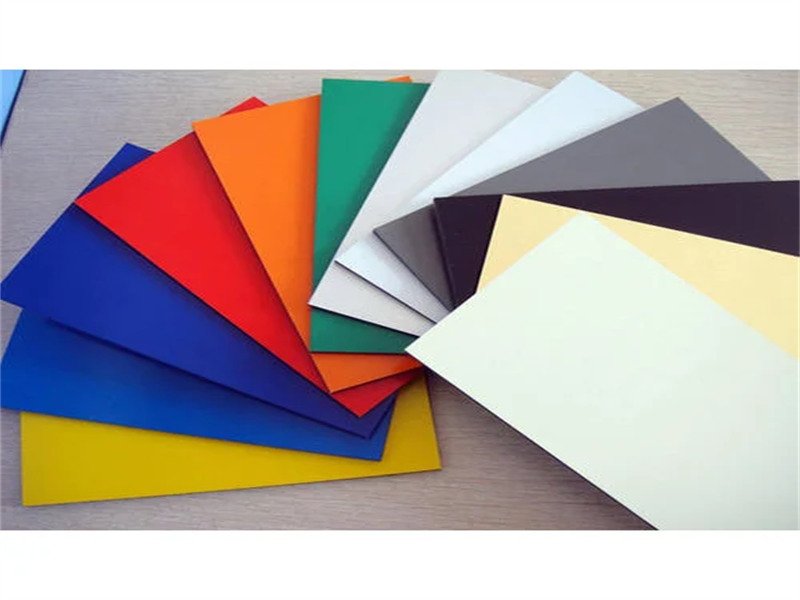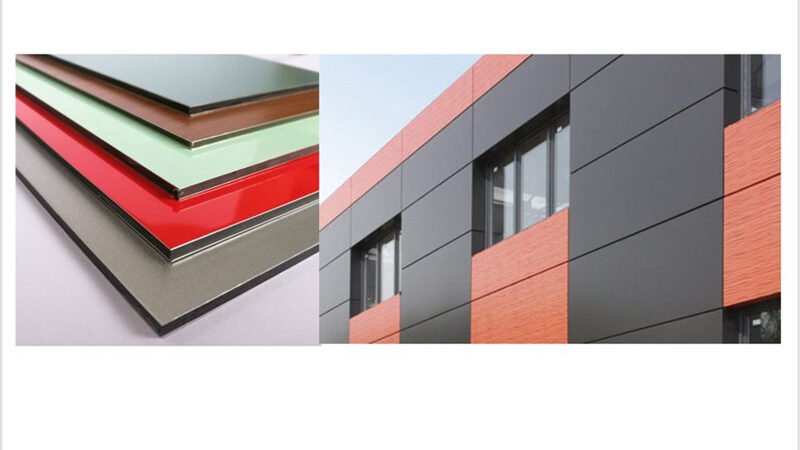When choosing building materials, especially for cladding, signage, or interior decoration, it’s important to understand the difference between Aluminium Composite Panels (ACP) and solid aluminium panels. Both materials are widely used in construction and design, but they have distinct characteristics, advantages, and applications.

Specification Table
| Specification | Aluminium Composite Panel (ACP) | Solid Aluminium Panel |
|---|---|---|
| Structure | Two aluminium sheets with plastic or FR core | Single solid aluminium sheet |
| Thickness Options | 3mm, 4mm, 5mm, 6mm (total) | 1.5mm, 2mm, 3mm, 4mm |
| Aluminium Skin | 0.21mm to 0.5mm | Full thickness aluminium |
| Common Alloy | 1100, 3003, 5052 | 3003, 5005, 5754 |
| Coating Type | PE, PVDF, Nano, Brushed, Mirror | PVDF, Powder Coating |
| Weight | Lightweight | Heavier than ACP |
| Fire Rating | FR rated options available | Naturally non-combustible |
| Packaging | Wooden pallets, plastic film, corner protectors | Wooden box or steel frame pallet |
What Is an Aluminium Composite Panel (ACP)?

Aluminium Composite Panels are made from two thin aluminium sheets bonded to a non-aluminium core. This core can be made of polyethylene (PE) or a fire-retardant material (FR). ACP is popular for its light weight, cost-effectiveness, and flexible design.
Key Features of ACP:
- Easy to cut, bend, and install
- Lightweight and easy to transport
- Available in multiple finishes: mirror, brushed, marble, wood
- Economical for large-scale projects
What Is a Solid Aluminium Panel?
Solid aluminium panels are made from a single sheet of high-grade aluminium. These panels are more robust, durable, and highly weather-resistant, often used for heavy-duty applications like high-rise facades and industrial buildings.
Key Features of Solid Panels:
- Strong impact resistance
- Long lifespan and low maintenance
- Better fire performance
- Suitable for custom shapes and perforated designs
ACP vs Solid Aluminium: Main Differences
| Aspect | ACP Panel | Solid Aluminium Panel |
|---|---|---|
| Durability | Moderate (10–20 years) | High (20–30+ years) |
| Fire Resistance | Varies by core (PE or FR) | Naturally fire-resistant |
| Weight | Lightweight | Heavier, needs stronger support structures |
| Price | More economical | Higher material and installation cost |
| Finish Options | Wide range of colors and patterns | Limited but durable finishes |
| Environmental Impact | Less recyclable (if PE core) | 100% recyclable aluminium |
Applications
ACP Panel Applications:
- Exterior wall cladding
- Advertising signboards
- Interior wall decoration
- Exhibition stands
- False ceilings
Solid Aluminium Panel Applications:
- High-rise building facades
- Transportation hubs (airports, stations)
- Industrial cladding
- Perforated architectural screens
- Sunshade and canopy systems
Which One Should You Choose?
Your choice depends on your project needs:
- Choose ACP if you need a lightweight, flexible, and cost-effective material for signage, interiors, or medium-height facades.
- Choose Solid Aluminium Panels if you require strong durability, fire performance, and long-term exterior use for tall buildings or industrial settings.
Product Classification by Type and Thickness
| Panel Type | Common Thickness | Main Use |
|---|---|---|
| ACP PE Core | 3mm, 4mm | Interior & signage |
| ACP FR Core | 4mm, 5mm | Exterior walls, safety buildings |
| Solid Aluminium Sheet | 2mm, 3mm, 4mm | Cladding, facades, decorative uses |
Conclusion
Understanding the difference between ACP and solid aluminium panels can save you cost, time, and effort in your project. While ACP offers design flexibility and cost-efficiency, solid aluminium panels provide superior strength and longevity.
If you’re unsure about the best option for your needs, feel free to contact our expert team for technical support and free samples.
